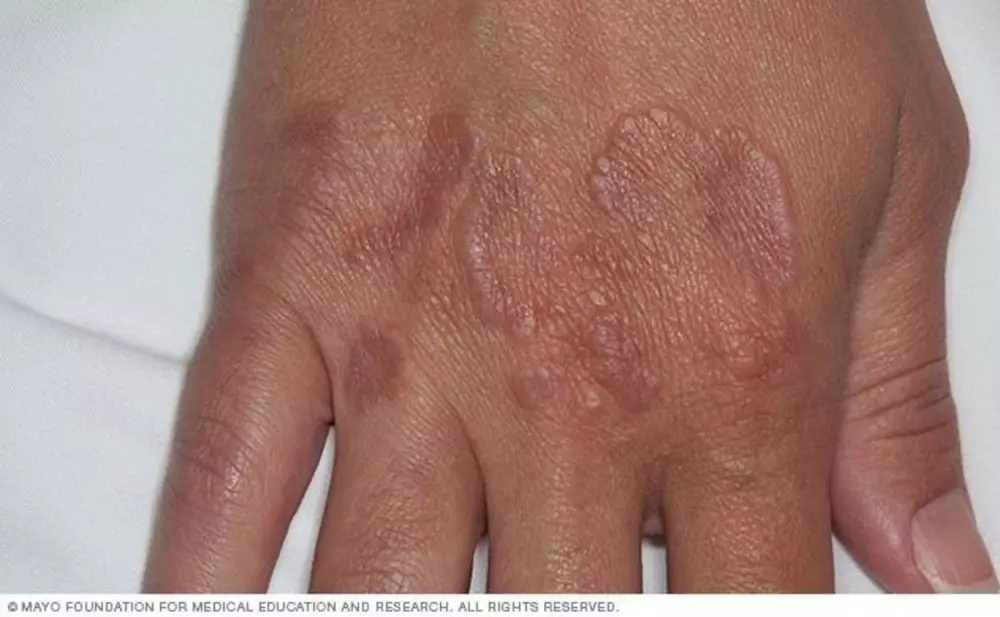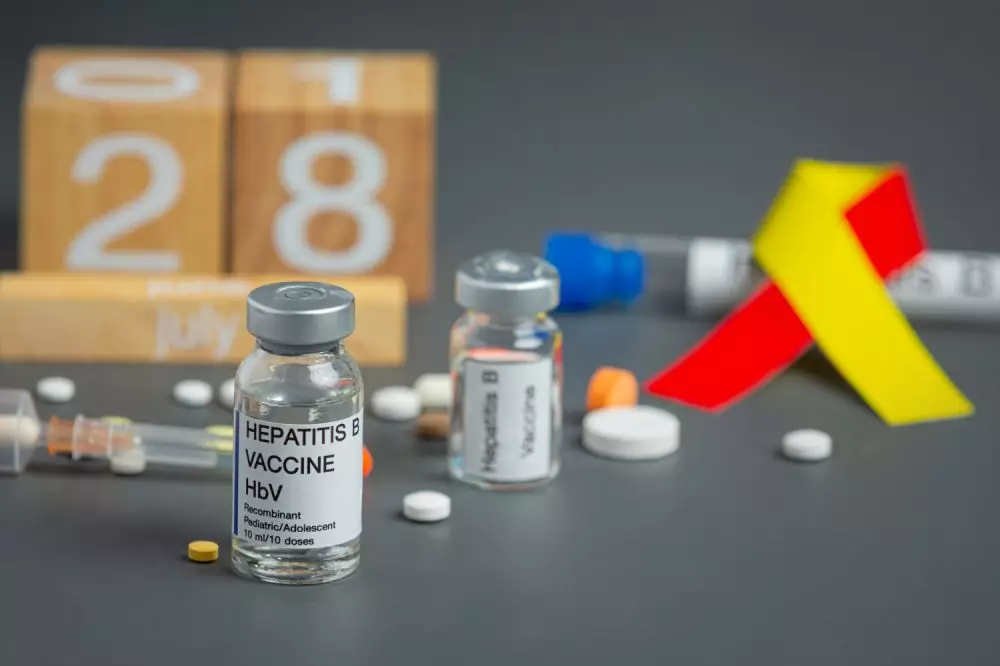foto: freepik.com
Brilio.net - Tattoos are part of technological advances in the field of art. Images of tattoos on the skin with attractive and aesthetic patterns are a special attraction for people who like them. However, behind its contemporary and attractive appearance, the use of tattoos that do not meet standards carries great dangers. Fake tattoos always offer cheaper prices than standard tattoo practices in general. However, due to information factors that are not well known to ordinary people, there are still many who choose fake tattoo practices, which are very risky for body health.
Several diseases can be received by fake tattoo users, such as infections, cancer, hepatitis, and even HIV/AIDS. These various diseases are caused by non-sterile equipment and continuous use of needles. Apart from that, illegal color inks which contain heavy metal levels also have the potential to cause poisoning. If you want to use a tattoo, you should look for a tattoo artist who is licensed and meets operational suitability standards. You can read information about the risk of disease due to fake tattoos, which can have long-term effects, below.
No need to wait any longer, let's read this article until the end. Here are 10 risks of disease due to using fake tattoos. As reported by brilio.net from various sources, Tuesday (28/5).
10 Risks of disease due to using fake tattoosUsing fake tattoos can carry serious health risks. The following are 10 risks of disease that can occur due to the use of fake tattoos that are not sterile or do not meet standards:
1. Skin infection

photo: id.pinterest.com/@dicinenet.com
Using fake tattoos that are not sterile or do not comply with standards carries a high risk of causing skin infections. Various factors cause skin infections when using fake tattoos, such as using non-sterile needles. In fake tattoo practices, needles are often used repeatedly without proper sterilization. This can carry bacteria or viruses from one person to another.
Apart from needles, other equipment such as ink tubes, tattoo machines, and the like also often escape sterilization. So bacteria and germs can be easily transferred to open skin during the tattoo process. Other things you need to be wary of when using fake tattoos are dirty environmental locations and unhygienic processes. The tattoo artist may not wash their hands properly, or use the same gloves for multiple clients. As a result, germs can spread easily, leading to infection.
2. Keloid

photo: id.pinterest.com/@AWD Med
Keloids can be darker or lighter in color than the surrounding skin, and can cause very annoying itching.
This can happen if the tattooing process is not sterile and causes infection. The body will react by repairing the area, and excessive healing can trigger keloid formation. In addition, in fake tattoo practices, the techniques used may be rough or inappropriate, causing greater trauma to the skin tissue.
3. Heavy metal poisoning

photo: freepik.com
Heavy metals such as mercury, lead, and cadmium are often found in low-quality or illegal tattoo dyes. Poisoning can be triggered by the use of low-quality and illegal color inks, resulting in serious skin health problems. Some symptoms of heavy metal poisoning due to fake tattoos include nausea, vomiting, diarrhea, headaches and muscle/joint pain.
4. Granuloma

photo: id.pinterest.com/@Mayo Clinic
Using fake tattoos that are not sterile or do not meet standards can cause granulomas in the tattoo area. Granulomas are small collections of immune cells that form, when the body tries to isolate foreign material, or an infection that cannot be removed. This is a form of immune response that often appears as a lump under the skin.
Fake tattoos usually use color ink that does not meet appropriate standards, so the body perceives the ink as a foreign substance, which the body cannot break down. In addition, using non-sterile needles or machines can risk skin infection. This infection can cause inflammation which leads to the formation of granulomas.
5. Hepatitis

photo: freepik.com
Using fake tattoos that are not sterile or do not comply with standards carries a high risk of causing hepatitis, especially hepatitis B and C. Hepatitis is inflammation of the liver caused by a viral infection or exposure to toxic substances. Hepatitis B and C are the types of hepatitis that are most often transmitted through blood.
If someone with a history of hepatitis gets a tattoo on their skin, their blood could contaminate the tattoo needle or equipment. When the needle is then used on another person, there is a risk of transmitting the virus. In addition, in fake tattoo practices, tattoo equipment is often not cleaned properly. Without proper sterilization, the hepatitis virus can remain active on the surface of the tattoo tool.
6. Skin cancer

photo: id.pinterest.com/@Men's Health
Using fake tattoos that are not sterile or do not meet standards can increase the risk of skin cancer. There are several factors involved in using fake tattoos that can increase the risk of skin cancer. One of them is the use of unsafe tattoo ink. Unsafe or low-quality tattoo ink often contains dangerous chemicals that have not been tested for safety for use on human skin. These dyes may contain heavy metals such as lead, cadmium, and mercury.
In addition, tattoo ink that contains irritating or allergenic ingredients can cause chronic inflammation of the skin. Chronic inflammation is one factor that can trigger cellular changes that have the potential to become cancerous. When fake tattoos are used over a long period of time, the chemicals in the tattoo ink cause mutations in human DNA cells. This mutation can cause cells to grow uncontrollably and develop into cancer.
7. Skin diseases

photo: freepik.com
This skin disease is caused by needles being used repeatedly, or other equipment not undergoing a proper sterilization process. Some examples of skin diseases caused by using fake tattoos, such as cellulitis, ringworm, allergies and so on.
Cellulitis is a skin infection caused by bacteria, usually Streptococcus or Staphylococcus aureus. Then, abscess is a skin disease in the form of a painful collection of pus under the skin, due to bacterial infection. Some of these skin diseases are suspected to be caused by the use of fake tattoos.
8. Allergies

photo: freepik.com
Several types of allergies are caused by fake tattoos, such as allergic contact dermatitis, phototoxic dermatitis, lichenoid reactions. Meanwhile, signs that the body is affected by allergies, such as reddish skin, itching in the affected area, swelling, bumps appearing, and severe pain.
9. HIV/AIDS

photo: freepik.com
Using fake tattoos that are not sterile or do not comply with standards can increase the risk of transmitting the Human Immunodeficiency Virus (HIV), which can cause Acquired Immunodeficiency Syndrome (AIDS). Fake tattoo practices often use needles that are not sterile, or needles that are reused without proper sterilization procedures.
Needles that are contaminated with blood containing the HIV virus can spread the infection from one individual to another during tattooing. Apart from needles, the use of non-sterile equipment can cause HIV transmission if there is contact with infected blood.
10. Permanent injury

photo: freepik.com
Using fake tattoos that are not sterile or do not meet standards can increase the risk of permanent injury or other complications on the skin. Skin infections can cause deeper tissue damage, disrupt the healing process, and increase the risk of permanent scarring. Permanent injuries can occur due to tattoo malpractice that does not comply with applicable specifications and standards. These wounds will be very difficult to remove, because the skin tissue has been damaged. Apart from permanent scars, injuries caused by tattoos also have the potential to increase the risk of other health problems.
Those are 10 risks of disease due to using fake tattoos. The hope is that once you know this information, you can take anticipatory steps to avoid the risk of threatening disease. Choose a tattoo artist whose standards and suitability have been verified. Also make sure the equipment used in the tattooing process is clean and sterile. Hopefully this information is useful!
(brl/far)